-
Car Reviews
- All reviews
- Midsize SUVs
- Small cars
- Utes
- Small SUVs
- Large SUVs
- Large cars
- Sports SUVs
- Sports cars
- Vans
Latest reviews
- Car News
-
Car Comparisons
Latest comparisons
- Chasing Deals
- ChasingCarsGPT
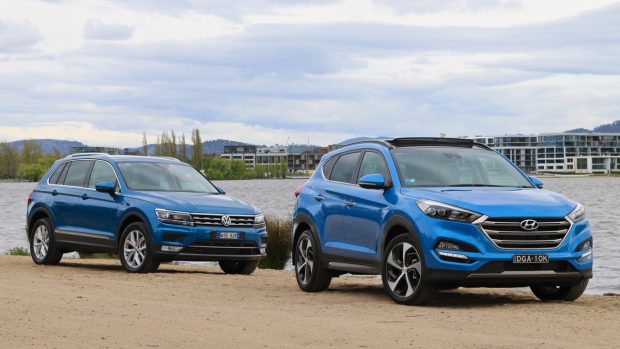
For the last year, we’ve recommended the Hyundai Tucson Highlander to buyers with $50,000 to spend on a five-seat SUV. The Tucson drives well, it’s easy to look at and to live with, and, notwithstanding a recent $2,000 price increase to $47,450, it’s good value thanks to generous standard equipment. The medium SUV segment moves quickly, though – it’s the fastest-growing part of the Australian car market – and we’ve been waiting for something good to arrive to challenge the Tucson’s class-leading status. That challenger is now here: the 2017 Volkswagen Tiguan Highline is $49,990, just slipping under the fifty grand mark. German-built, based on the incredibly good Golf platform, and promising impressive cabin and safety tech, it’s clear the top-end Tiguan has the Tucson Highlander squarely in its sights. We borrowed the diesel variant of both cars and pitted them against one another over 1,500 kilometres to ask one question: which is the best medium SUV in a Tucson vs Tiguan battle?
The Hyundai Tucson is available in four trim grades. The top-spec Highlander is the trim we recommend. It has AWD and comes with either a 136kW two-litre diesel ($47,450), or a cheaper 1.6-litre turbo petrol ($45,450). If you don’t do a lot of highway miles, the sweeter petrol is the one to buy. Stepping up to the Highlander adds a number of premium features including an 8-inch media system, 19-inch wheels, a panoramic sunroof and ventilated leather seats. However, advanced safety is limited only to a blind spot warning and lane keep assist features.
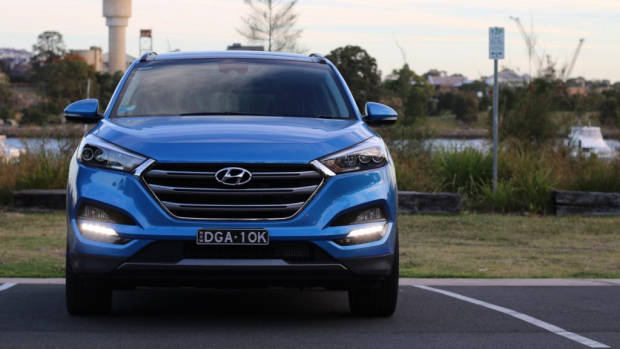
The Tucson stands out here because of its driving dynamics. The diesel is punchy, accelerating quietly and smoothly. The six-speed auto is very well calibrated. The Tucson is also a keen handler on a country road, with quick reflex and limited body roll. Hyundai employs local engineers to tune the suspension which makes a real difference: despite its large wheels the Tucson rides very comfortably and is reasonably quiet inside.
The Volkswagen Tiguan is available in three trim grades. A well-optioned Comfortline will suit most people. This top-spec Highline does offer a few exclusive features including LED headlights and taillights, 18-inch wheels, and heated leather sports seats. Like all Tiguans, it has an 8-inch navigation screen. With a key $2,000 safety pack, the Tiguan gains incredible technology including a 12-inch digital screen in front of the driver and a full suite of advanced safety tech, including active cruise control. The technology is great to use, making the Tiguan feel more expensive and more advanced than its price suggests.
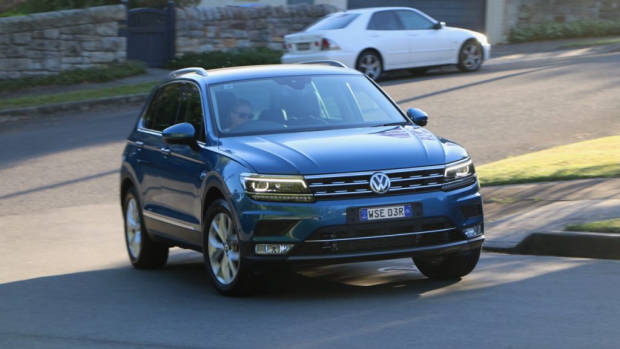
For now, the Tiguan Highline is only available with a 140kW two-litre diesel ($49,990). A 162kW turbo petrol, using the Golf GTI engine ($48,490), will arrive soon. We recommend buying the petrol – the diesel is very economical but it isn’t a completely smooth pairing with the double-clutch auto. The Tiguan steers accurately and is also very comfortable on Australian roads but is quieter at highway speeds.
Both of these SUVs use a similar formula, but in reality, they feel quite different on the road. The Tucson Highlander CRDI uses a two-litre diesel making 136kW of power and 400Nm of torque. The Tiguan Highline 140TDI also has a two-litre diesel making 140kW and 400Nm. We had to double-check the spec sheets – these SUVs weigh within one kilogram of one another and are dimensionally near-identical.
But the similarities are deceptive, and driving these SUVs over 1,500 kilometres – on highway, dirt roads and around town – revealed key differences. One of these SUVs is better to drive, and one is more comfortable – and easier to live with.
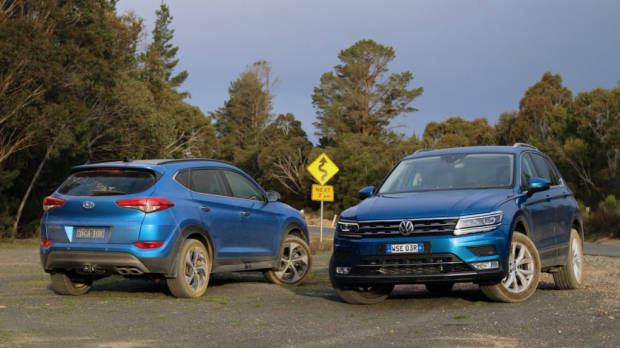
It’s a major boon for Hyundai that the Tucson is actually the driver’s car here. The engine and six-speed auto are a terrific pair. The Hyundai shocked us with how refined its diesel is – it is really quiet and almost lag-free thanks to the smart-shifting transmission.
The steering is also relatively natural, and the Tucson is an agile and keen handler. That’s true both in town, where the Hyundai feels nippy, and on a faster country road, where you feel the Hyundai wants you to push it harder – though it does run out of grip more quickly than the Volkswagen. The Tucson’s Australian-tuned suspension is great, ironing out imperfections and smoothing off rough edges with ease.
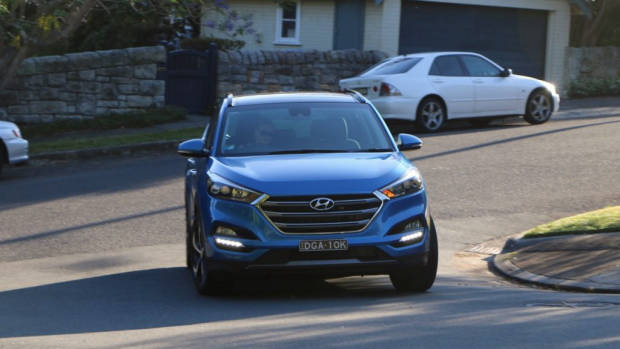
The Tiguan is the more comfortable and relaxed car in this pair. Because neither of these cars are actually very sporty – they’re medium-sized SUVs with a diesel, after all – the Volkswagen doesn’t lose points for this reason. The diesel isn’t as urgent at town speeds, and in fact, it exhibits some significant lag off the line, which didn’t impress. However, on the highway, the Tiguan’s TDI feels strong and capable with a seriously punchy mid-range. The diesel is, however, more vocal in the Volkswagen.
Volkswagen have developed a very capable all-wheel-drive system in 4MOTION and it does make the Tiguan feel more secure on dirt roads or in the wet. The VW is very planted and grippy, leading to an upmarket, solid feel behind the wheel. The Tiguan doesn’t mind being hustled, but it prefers to be driven smoothly. On a country road it can carry very decent speeds in a calm manner, however, and the German suspension tune works well here, too, with good compliance at slow and fast speeds.
It’s inside these SUVs that the differences between them are most clear. When it comes to both roominess and plushness, it’s the newer Volkswagen that kicks some important goals.
Though the Hyundai Tucson offers good room for rear-seat passengers – with air vents on Highlander, plus a fold-down armrest – the Volkswagen has a more clever second row. The Tiguan’s back seats are on rails, meaning you can make the boot enormous (615L) or slightly smaller to gain legroom for those in the back. The boxy Volkswagen has a bit more headroom too.
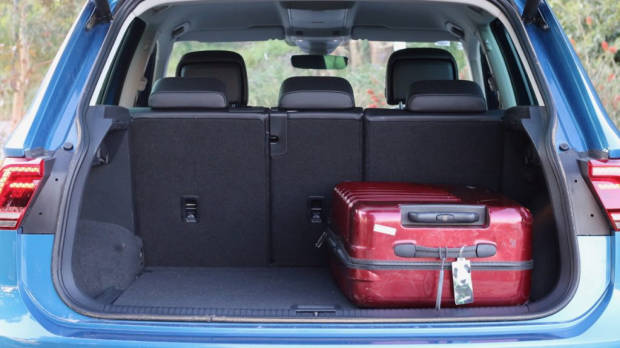
Plus, the from the Comfortline grade up, the Tiguan adds airline-style tray tables in the back which will mean the kids can balance snack or a colouring book – or an iPad – on a long trip very easily. That’s smart design. Plus, those in the back have their own temperature control on the Highline too.
Both boots are pram-friendly and have their own tricks. The Hyundai is family-friendly from the start here: stand behind the boot with the key in your pocket for a few seconds and the boot opens right up, automatically – perfect for when you’ve got your hands full. Inside the Tucson’s boot there’s 488L of space; there are a couple of shopping bag hooks, and there is no boot lip, so you can slide suitcases straight in and out.
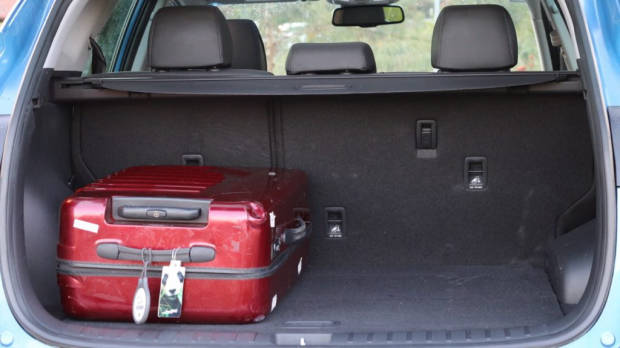
You can equip the Tiguan with a boot that opens with a wave of the foot, but I couldn’t get it to work. The tailgate is automatic on the Highline, though, and once it’s open the Volkswagen has a big, big boot. There are deep pockets either side of the boot floor to stash shopping bags in. You can fold the rear seats flat right from within the boot – very clever – and once the seats are down, a mountain bike can slide straight in with wheels on. It’s huge!
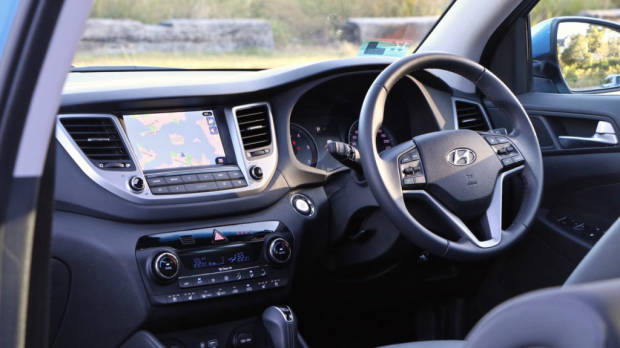
Up front, the Tucson’s comfortable and functional cabin remains good-looking and straightforward. The cooled and heated leather seats are supportive – and in Australia the cooling feature is very relevant. The major touch points – steering wheel, gear stick – feel premium. In the centre of the dash is the Tucson’s 8-inch touchscreen. The navigation software is super easy to use but the audio system isn’t great – music sounds a little dull through the speakers. Oddly, the Tucson Highlander doesn’t get Apple CarPlay and Android Auto, but the entry-level models do get that important tech.
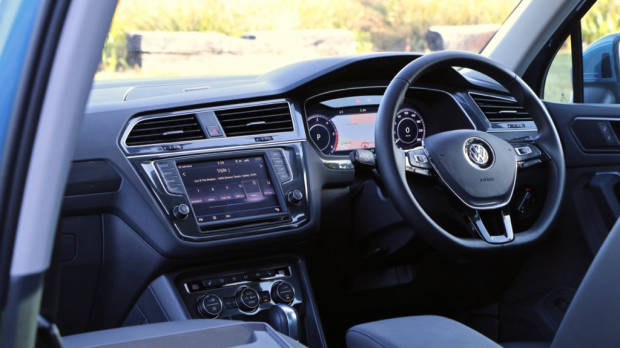
The Tiguan Highline misses cooled seats, but its Germanic interior is simple and luxurious. Most surfaces feel even more premium – especially the soft steering wheel and supple leather seats. However, the Volkswagen’s trick is technology. Every Tiguan gets a slick 8-inch touchscreen with Apple CarPlay and Android Auto – plus decent built-in navigation too, and the stereo is better in the VW – though it could be crisper still. But it’s the Active Information Display – Volkswagen’s name for the optional 12-inch screen that sits in front of the driver – that is the show-stopper. This is Audi tech that has filtered down to VW – and it makes driving safer and more enjoyable, with a huge map, audio info, or dials projected in front of you. It’s absolutely worth the money.
There are four main running costs to any vehicle – maintenance, fuel, insurance and depreciation.
Both the Volkswagen Tiguan and Hyundai Tucson are covered by capped price servicing programmes. For the Volkswagen, the first six years of scheduled services are capped in price. The Hyundai offers a lifetime capped price servicing arrangement.
Both of these cars only need to be services once annually, or every 15,000 kilometres – whichever comes first. Over three years of ownership, the Tiguan costs $1,513 to service, compared to $1,137 for the Tucson.
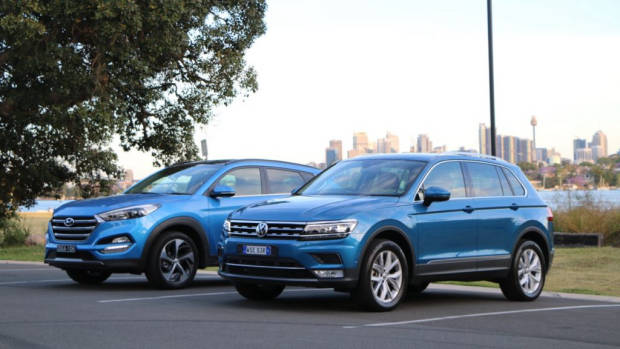
The Hyundai is a bit thirstier than the Volkswagen, though – the claimed combined economy of the Tucson is 6.8L/100km, versus 5.9L/100km for the Tiguan. While the cars exceeded these figures on test, the gap was fairly steady in the Volkswagen’s favour. At current prices, over three years the Hyundai would use $3,716 in fuel compared to $3,224 for the Volkswagen.
We sought insurance quotes from two mainstream insurers based on a 30 year old living in Chatswood, NSW, with a good driving history.
On average the Tucson costs $1,172 to insure – or $3,516 over three years. The Volkswagen quotes were $1,137 on average, or $3,441 over three years.
Based on three years of ownership at 14,000km per year – the average – Glass’ Guide indicates that the Hyundai will keep about 56.9% of its value and fetch about $27,000 – meaning depreciation of $20,450 over three years.
The Volkswagen depreciates at a slower rate, retaining about 62% of its value and fetching about $31,000 in three years’ time – depreciation of $18,990.
That’s a lot of figures – but here’s the wrap. Over three years we predict the Hyundai will cost you about $28,800, including depreciation. The Volkswagen will cost you about $27,200, including depreciation.
The Hyundai Tucson Highlander and Volkswagen Tiguan Highline are great family cars – like few others, they combine the practicality of a medium SUV with generous value and an X-factor.
For the Hyundai, that X-factor is the driving experience. Hyundai’s investments in engineering and local Australian tuning have made enormous positive differences to their cars in a number of ways – but mostly it’s changed the way they drive.
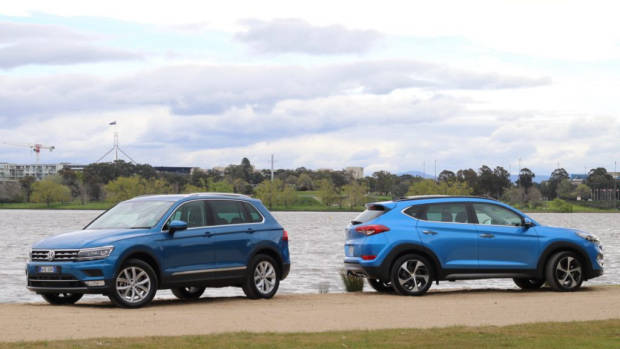
As we roll into 2017, Hyundai is genuinely nipping at the heels of long-established, premium European players with a number of superb turbo engines – including the Tucson’s diesel, which is the best engine here by some margin – and really enjoyable handling characteristics.
Contrastingly, the Volkswagen’s more sedate drive takes a back seat to the Tiguan’s seriously advanced cabin. The VW’s digital gauges – called the Active Info Display – is the best piece of tech available in this class, placing a huge, crisp screen in front of the driver, making every drive safer and more convenient.
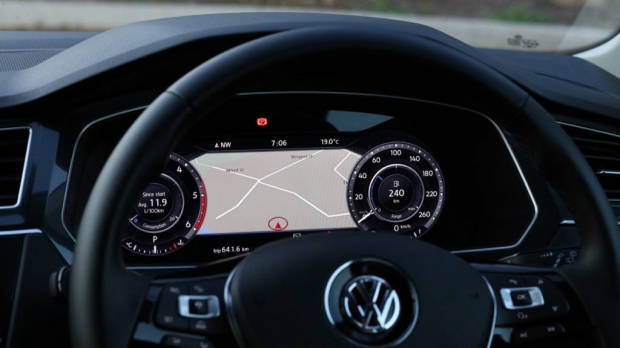
The Volkswagen is also a practicality star, with great room for back seat passengers, thoughtful touches for kids, and a boot that beats everything else in this class. Plus, the Tiguan has that usual Volkswagen trait of just feeling expensive: the doors thunk, the interior finishes are upmarket, and the conservative looks outside are Audi-like.
For both cars, though, the smartest buyers will go for the turbo petrol rather than a diesel – if you’re not always on the highway. The Tucson Turbo and the almost-here Tiguan 162TSI are the smoother, faster, more enjoyable performers.

At the end of the day, the purpose of a $50,000 medium SUV is not to be overtly sporty. They’re meant to bring a bit of luxury to the everyday; to cosset their passengers; and to be loaded up with all the stuff that a family has to cart around.
The Tiguan does all of those things with a touch more fluency – it’s a special car, and an SUV that moves the game forward. Because of that, the Volkswagen Tiguan Highline is the best $50,000 SUV you can currently buy.
Latest comparisons
About Chasing cars
Chasing Cars reviews are 100% independent.
Because we are powered by Budget Direct Insurance, we don’t receive advertising or sales revenue from car manufacturers.
We’re truly independent – giving you Australia’s best car reviews.